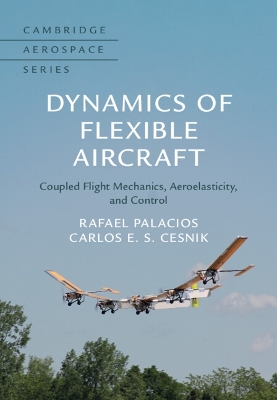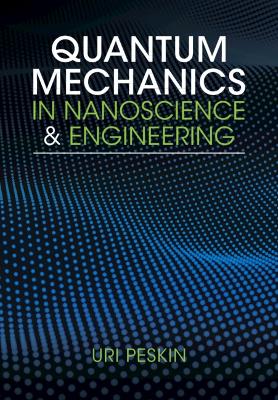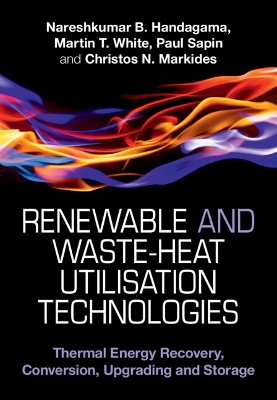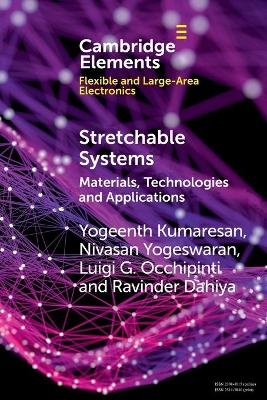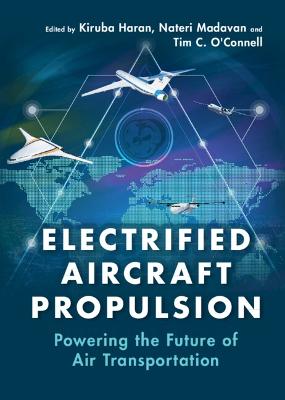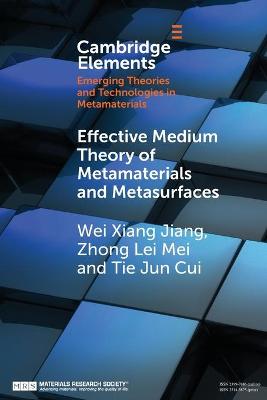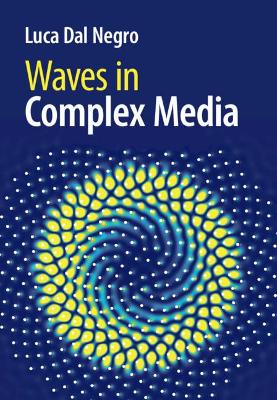Current Signature Analysis for Condition Monitoring of Cage Induction Motors
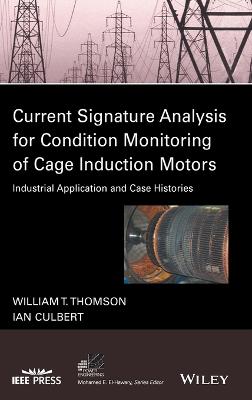 -15%
portes grátis
-15%
portes grátis
Current Signature Analysis for Condition Monitoring of Cage Induction Motors
Industrial Application and Case Histories
Culbert, Ian; Thomson, William T.
John Wiley & Sons Inc
12/2017
448
Dura
Inglês
9781119029595
15 a 20 dias
736
ACKNOWLEDGMENTS xvii
FOREWORD xix
PREFACE xxiii
NOMENCLATURE xxvii
ACRONYMS AND ABBREVIATIONS xxxiii
RELEVANT UNITS OF EQUIVALENCE USEFUL FOR THIS BOOK xxxv
CHAPTER 1 MOTOR CURRENT SIGNATURE ANALYSIS FOR INDUCTION MOTORS 1
1.0 Introduction 1
1.1 Historical Development of MCSA and Goals of This Book 4
1.2 Basic Theory of Operation of the 3-Phase Induction Motor 6
1.3 Starting and Run-Up Characteristics of SCIMs 20
1.4 Illustrations of Construction of a Large HV SCIM 29
1.5 Questions 33
References 34
CHAPTER 2 DESIGN, CONSTRUCTION, AND MANUFACTURE OF SQUIRREL CAGE ROTORS 39
2.0 Introduction 39
2.1 Aluminum and Copper Die-Cast Windings 40
2.2 Fabricated Squirrel Cage Windings 43
2.3 Design and Manufacturing Features of Squirrel Cage Rotor Windings to Minimize Failures 52
2.4 Questions 53
References 54
CHAPTER 3 CAUSES OF BREAKS IN SQUIRREL CAGE WINDINGS DURING DIRECT-ON-LINE STARTS AND STEADY-STATE OPERATION 55
3.0 Introduction 55
3.1 Mechanical Stresses and Consequential Forces on Rotor Bars and End Rings 56
3.2 Thermal Stresses in the Rotor Bars and End Rings 57
3.3 Broken Bars and End Rings Due to Combined Mechanical and Thermal Stresses When Starting High Inertia Loads 59
3.4 Rotor Bar Stresses Resulting from a Loose Slot Fit 60
3.5 Strengths and Weaknesses of Certain Bar and End Ring Shapes and Types of Joints 62
3.6 Pulsating Loads Due to Crushers and Compressors 62
3.7 Direct-On-Line Starting of Large Induction Motors Driving High Inertia Fans 63
3.8 Direct-On-Line Starting of Large Induction Motors Driving Centrifugal Pumps 66
3.9 Limitations on Repetitive Motor Starts 68
3.10 Criteria for Design of Squirrel Cage Rotor Windings 69
3.11 Samples of Breaks in Squirrel Cage Rotor Windings 72
3.12 Questions 77
References 77
Further Reading 78
CHAPTER 4 MOTOR CURRENT SIGNATURE ANALYSIS (MCSA) TO DETECT CAGE WINDING DEFECTS 79
4.0 Summary 79
4.1 Introduction 79
4.2 Derivation of Current Component at f (1 ? 2s) 82
4.3 Reasons for Current Component at f (1 + 2s) 83
4.4 Spectrum Analysis of Current 85
4.5 Severity Indicators for Assessing Condition of Cage Windings at Full-Load 93
4.6 The dB Broken Bar Severity Chart 110
4.7 Influence of Number of Rotor Bars and Pole Number on the Equivalent Broken Bar Factor with Measured dB Difference Values 111
4.8 Questions 116
References 118
CHAPTER 5 MCSA INDUSTRIAL CASE HISTORIES-DIAGNOSIS OF CAGE WINDING DEFECTS IN SCIMs DRIVING STEADY LOADS 119
5.0 Introduction and Summary of Case Histories 119
5.1 Case History (2000-2014)-Summary and Key Features 120
5.2 Case History (1983)-Summary and Key Features 122
5.3 Case History (1982)-Summary and Key Features 125
5.4 Case History (2002)-Summary and Key Features 128
5.5 Case History (1985-1987)-Summary and Key Features 133
5.6 Case History (2006)-Summary and Key Features 136
5.7 MCSA Case History (2004)-Summary and Key Features 139
5.8 MCSA Case History (2004)-Summary and Key Features 141
5.9 Questions 143
References 144
CHAPTER 6 MCSA CASE HISTORIES-DIAGNOSIS OF CAGE WINDING DEFECTS IN SCIMs FITTED WITH END RING RETAINING RINGS 147
6.0 Introduction and Summary of Case Histories 147
6.1 Case History (2006)-Summary 148
6.2 Concluding Remarks on this Challenging Case History 160
6.3 Case History (1990)-Summary and Key Features 161
6.4 Summary and Lessons Learned from Industrial Case Histories in Chapters 5 and 6 166
6.5 Questions 170
References 172
CHAPTER 7 MCSA CASE HISTORIES-CYCLIC LOADS CAN CAUSE FALSE POSITIVES OF CAGE WINDING BREAKS 173
7.1 Introduction and Summary of Case Histories 173
7.2 Case History (2006)-Effect of Gas Recycling in a Centrifugal Gas Compressor and the Detection of Broken Rotor Bars 179
7.3 Case History: False Positive of Broken Rotor Bars Due to Recycling of Gas in a Centrifugal Compressor 180
7.4 Two Case Histories (2002 and 2013)-Broken Rotor Bars in the Same SCIM without and with Gas Recycling in a Gas Compressor 185
7.5 Case History 1986-Fluid Coupling Dynamics Caused a False Positive of a Cage Winding Break 193
7.6 Questions 198
References 200
CHAPTER 8 MCSA CASE HISTORIES-SCIM DRIVES WITH SLOW SPEED GEARBOXES AND FLUCTUATING LOADS CAN GIVE FALSE POSITIVES OF BROKEN ROTOR BARS 201
8.1 Introduction and Summary of Case Histories 201
8.2 Case History (1989)-Slow Speed Coal Conveyor, Load Fluctuations, and Gearbox in the Drive Train 213
8.3 MCSA Case History (1990)-Possible False Positive of Broken Rotor Bars in a SCIM Driving a Coal Conveyor Via a Slow Speed Gearbox 216
8.4 Case History (1992)-Impossible to Analyze MCSA Data Due to Severe Random Current Fluctuations from The Mechanical Load Dynamics from the Coal Crusher 217
8.5 Case History (1995)-Successful Assessment of Cage Windings When the Load Current Fluctuations are Normal from a SCIM Driving Coal Crusher 221
8.6 Two Case Histories (2015)-False Positive of Broken Bars in One of the SCIMs Driving Thrusters on an FPSO If Influence of Drive Dynamics is Discounted 227
8.7 Questions 237
References 238
CHAPTER 9 MISCELLANEOUS MCSA CASE HISTORIES 241
9.0 Introduction and Summary of Case Histories 241
9.1 Possible False Positives of Cage Winding Breaks in Two 1850 kW SCIMs, Due to Number of Poles (2p) Equal to Number of Spider Support Arms (Sp) on Shaft (1991) 242
9.2 Case History (2007)-SCIM with Number of Poles Equal to Number of Kidney Shaped Axial Ducts in the Rotor-False Positive of Broken Bars Prevented by Load Changes 251
9.3 Two Case Histories (2005-2008)-Normal and Abnormal Pumping Dynamics in Two SCIM Seawater Lift Pump Drive Trains 253
9.4 MCSA Case History (2006-2007)-Slack and Worn Belt Drives in Two SCIM Cooling Fan Drives in a Cement Factory 259
9.5 Application of MCSA to Inverter-FED LV and HV SCIMs 263
9.6 Case History (1990)-Assessment of the Mechanical Operational Condition of an Electrical Submersible Pump (ESP) Driven by a SCIM Used in Artificial Oil Lift 267
9.7 Questions 270
References 271
CHAPTER 10 MCSA TO ESTIMATE THE OPERATIONAL AIRGAP ECCENTRICITY IN SQUIRREL CAGE INDUCTION MOTORS 273
10.0 Summary and Introduction 273
10.1 Definition of Airgap Eccentricity 274
10.2 Causes and Associated Types of Airgap Eccentricity 276
10.3 Unbalanced Magnetic Pull (UMP) and Rotor Pull-Over 281
10.4 Current Signature Pattern due to Airgap Eccentricity 284
10.5 Questions 294
References 295
CHAPTER 11 CASE HISTORIES-SUCCESSFUL AND UNSUCCESSFUL APPLICATION OF MCSA TO ESTIMATE OPERATIONAL AIRGAP ECCENTRICITY IN SCIMS 299
11.0 Summary and List of Case Histories 299
11.1 Flow Chart of MCSA Procedure to Estimate Operational Airgap Eccentricity 300
11.2 Case History (1989)-Low Level of Airgap Eccentricity in a SCIM Driving a Centrifugal Air Compressor 302
11.3 Two Case Histories (2004)-Operational Airgap Eccentricity in Nominally Identical SCIMs Driving Pumps in a CCGT Power Station 307
11.4 Four Case Histories (2005)-Abnormal Level of Airgap Eccentricity in a Large, Low Speed, HV Motor Driving a Cooling Water Pump in a Power Station 310
11.5 Case History (1988)-High Level of Airgap Eccentricity in an HV SCIM Driving a Pump in a Large Oil Storage Tank Facility 318
11.6 Case History (2001)-High Airgap Eccentricity in a Cooling Water Pump Motor that Caused Severe Mechanical Damage to HV Stator Coils 324
11.7 Case History (2008)-Unsuccessful Application of MCSA Applied to a Large (6300 kW), Inverter-FED, 6600 V SCIM During a No-Load Run to Assess Its Operational Airgap Eccentricity 332
11.8 Case History (2008)-Successful Application of MCSA Applied to a Large (4500 kW), Inverter-Fed, 3300 V SCIM to Assess its Operational Airgap Eccentricity 335
11.9 Case History (2007)-Advanced MCSA Interpretation of Current Spectra Was Required to Verify High Airgap Eccentricity in an HV SCIM Driving a Primary Air (PA) Fan in a Power Station 339
11.10 Case History (1990)-Unsuccessful MCSA Case History to Assess Operational Airgap Eccentricity in an HV SCIM Driving a Slow Speed Reciprocating Compressor 343
11.11 Case History (2002)-Predict Number of Rotor Slots and Assessment of Operational Airgap Eccentricity in a Large 6600 V, 6714 kW/9000 HP SCIM Driving a Centrifugal Compressor 347
11.12 Questions 353
References 357
CHAPTER 12 CRITICAL APPRAISAL OF MCSA TO DIAGNOSE SHORT CIRCUITED TURNS IN LV AND HV STATOR WINDINGS AND FAULTS IN ROLLER ELEMENT BEARINGS IN SCIMS 359
12.1 Summary 359
12.2 Shorted Turns in HV Stator Winding Coils 361
12.3 Detection of Shorted Turns Via MCSA under Controlled Experimental Conditions 364
12.4 Detection of Defects in Roller Element Bearings Via MCSA 368
12.5 Questions 371
References 372
CHAPTER 13 APPRAISAL OF MCSA INCLUDING LESSONS LEARNED VIA INDUSTRIAL CASE HISTORIES 375
13.1 Summary of MCSA in Industry to Diagnose Cage Winding Breaks 375
13.2 Flow Chart for Measurement and Analysis of Current to Diagnose Cage Winding Breaks 375
13.3 MCSA to Diagnose Broken Rotor Bars in SCIMs Driving Steady Loads 379
13.4 Number of Rotor Bars, External Constraints, and Lessons Learned 380
13.5 Effect of End Ring Retaining Rings (ERRS) on Diagnosis of Broken Rotor Bars 381
13.6 MCSA Applied to SCIMs Driving Complex Mechanical Plant, Lessons Learned, and Recommendations 382
13.7 Double Cage Rotors-Classical MCSA can only Detect Cage Winding Breaks in Inner Run Winding 382
13.8 MCSA to Diagnose Operational Levels of Airgap Eccentricity in SCIMs 383
13.9 Recommendations to End Users 385
13.10 Suggested Research and Development Projects 386
References 388
Appendix 13.A Commentary on Interpretation of LV and HV Used in SCIMs 388
LIST OF EQUATIONS 389
INDEX 393
ACKNOWLEDGMENTS xvii
FOREWORD xix
PREFACE xxiii
NOMENCLATURE xxvii
ACRONYMS AND ABBREVIATIONS xxxiii
RELEVANT UNITS OF EQUIVALENCE USEFUL FOR THIS BOOK xxxv
CHAPTER 1 MOTOR CURRENT SIGNATURE ANALYSIS FOR INDUCTION MOTORS 1
1.0 Introduction 1
1.1 Historical Development of MCSA and Goals of This Book 4
1.2 Basic Theory of Operation of the 3-Phase Induction Motor 6
1.3 Starting and Run-Up Characteristics of SCIMs 20
1.4 Illustrations of Construction of a Large HV SCIM 29
1.5 Questions 33
References 34
CHAPTER 2 DESIGN, CONSTRUCTION, AND MANUFACTURE OF SQUIRREL CAGE ROTORS 39
2.0 Introduction 39
2.1 Aluminum and Copper Die-Cast Windings 40
2.2 Fabricated Squirrel Cage Windings 43
2.3 Design and Manufacturing Features of Squirrel Cage Rotor Windings to Minimize Failures 52
2.4 Questions 53
References 54
CHAPTER 3 CAUSES OF BREAKS IN SQUIRREL CAGE WINDINGS DURING DIRECT-ON-LINE STARTS AND STEADY-STATE OPERATION 55
3.0 Introduction 55
3.1 Mechanical Stresses and Consequential Forces on Rotor Bars and End Rings 56
3.2 Thermal Stresses in the Rotor Bars and End Rings 57
3.3 Broken Bars and End Rings Due to Combined Mechanical and Thermal Stresses When Starting High Inertia Loads 59
3.4 Rotor Bar Stresses Resulting from a Loose Slot Fit 60
3.5 Strengths and Weaknesses of Certain Bar and End Ring Shapes and Types of Joints 62
3.6 Pulsating Loads Due to Crushers and Compressors 62
3.7 Direct-On-Line Starting of Large Induction Motors Driving High Inertia Fans 63
3.8 Direct-On-Line Starting of Large Induction Motors Driving Centrifugal Pumps 66
3.9 Limitations on Repetitive Motor Starts 68
3.10 Criteria for Design of Squirrel Cage Rotor Windings 69
3.11 Samples of Breaks in Squirrel Cage Rotor Windings 72
3.12 Questions 77
References 77
Further Reading 78
CHAPTER 4 MOTOR CURRENT SIGNATURE ANALYSIS (MCSA) TO DETECT CAGE WINDING DEFECTS 79
4.0 Summary 79
4.1 Introduction 79
4.2 Derivation of Current Component at f (1 ? 2s) 82
4.3 Reasons for Current Component at f (1 + 2s) 83
4.4 Spectrum Analysis of Current 85
4.5 Severity Indicators for Assessing Condition of Cage Windings at Full-Load 93
4.6 The dB Broken Bar Severity Chart 110
4.7 Influence of Number of Rotor Bars and Pole Number on the Equivalent Broken Bar Factor with Measured dB Difference Values 111
4.8 Questions 116
References 118
CHAPTER 5 MCSA INDUSTRIAL CASE HISTORIES-DIAGNOSIS OF CAGE WINDING DEFECTS IN SCIMs DRIVING STEADY LOADS 119
5.0 Introduction and Summary of Case Histories 119
5.1 Case History (2000-2014)-Summary and Key Features 120
5.2 Case History (1983)-Summary and Key Features 122
5.3 Case History (1982)-Summary and Key Features 125
5.4 Case History (2002)-Summary and Key Features 128
5.5 Case History (1985-1987)-Summary and Key Features 133
5.6 Case History (2006)-Summary and Key Features 136
5.7 MCSA Case History (2004)-Summary and Key Features 139
5.8 MCSA Case History (2004)-Summary and Key Features 141
5.9 Questions 143
References 144
CHAPTER 6 MCSA CASE HISTORIES-DIAGNOSIS OF CAGE WINDING DEFECTS IN SCIMs FITTED WITH END RING RETAINING RINGS 147
6.0 Introduction and Summary of Case Histories 147
6.1 Case History (2006)-Summary 148
6.2 Concluding Remarks on this Challenging Case History 160
6.3 Case History (1990)-Summary and Key Features 161
6.4 Summary and Lessons Learned from Industrial Case Histories in Chapters 5 and 6 166
6.5 Questions 170
References 172
CHAPTER 7 MCSA CASE HISTORIES-CYCLIC LOADS CAN CAUSE FALSE POSITIVES OF CAGE WINDING BREAKS 173
7.1 Introduction and Summary of Case Histories 173
7.2 Case History (2006)-Effect of Gas Recycling in a Centrifugal Gas Compressor and the Detection of Broken Rotor Bars 179
7.3 Case History: False Positive of Broken Rotor Bars Due to Recycling of Gas in a Centrifugal Compressor 180
7.4 Two Case Histories (2002 and 2013)-Broken Rotor Bars in the Same SCIM without and with Gas Recycling in a Gas Compressor 185
7.5 Case History 1986-Fluid Coupling Dynamics Caused a False Positive of a Cage Winding Break 193
7.6 Questions 198
References 200
CHAPTER 8 MCSA CASE HISTORIES-SCIM DRIVES WITH SLOW SPEED GEARBOXES AND FLUCTUATING LOADS CAN GIVE FALSE POSITIVES OF BROKEN ROTOR BARS 201
8.1 Introduction and Summary of Case Histories 201
8.2 Case History (1989)-Slow Speed Coal Conveyor, Load Fluctuations, and Gearbox in the Drive Train 213
8.3 MCSA Case History (1990)-Possible False Positive of Broken Rotor Bars in a SCIM Driving a Coal Conveyor Via a Slow Speed Gearbox 216
8.4 Case History (1992)-Impossible to Analyze MCSA Data Due to Severe Random Current Fluctuations from The Mechanical Load Dynamics from the Coal Crusher 217
8.5 Case History (1995)-Successful Assessment of Cage Windings When the Load Current Fluctuations are Normal from a SCIM Driving Coal Crusher 221
8.6 Two Case Histories (2015)-False Positive of Broken Bars in One of the SCIMs Driving Thrusters on an FPSO If Influence of Drive Dynamics is Discounted 227
8.7 Questions 237
References 238
CHAPTER 9 MISCELLANEOUS MCSA CASE HISTORIES 241
9.0 Introduction and Summary of Case Histories 241
9.1 Possible False Positives of Cage Winding Breaks in Two 1850 kW SCIMs, Due to Number of Poles (2p) Equal to Number of Spider Support Arms (Sp) on Shaft (1991) 242
9.2 Case History (2007)-SCIM with Number of Poles Equal to Number of Kidney Shaped Axial Ducts in the Rotor-False Positive of Broken Bars Prevented by Load Changes 251
9.3 Two Case Histories (2005-2008)-Normal and Abnormal Pumping Dynamics in Two SCIM Seawater Lift Pump Drive Trains 253
9.4 MCSA Case History (2006-2007)-Slack and Worn Belt Drives in Two SCIM Cooling Fan Drives in a Cement Factory 259
9.5 Application of MCSA to Inverter-FED LV and HV SCIMs 263
9.6 Case History (1990)-Assessment of the Mechanical Operational Condition of an Electrical Submersible Pump (ESP) Driven by a SCIM Used in Artificial Oil Lift 267
9.7 Questions 270
References 271
CHAPTER 10 MCSA TO ESTIMATE THE OPERATIONAL AIRGAP ECCENTRICITY IN SQUIRREL CAGE INDUCTION MOTORS 273
10.0 Summary and Introduction 273
10.1 Definition of Airgap Eccentricity 274
10.2 Causes and Associated Types of Airgap Eccentricity 276
10.3 Unbalanced Magnetic Pull (UMP) and Rotor Pull-Over 281
10.4 Current Signature Pattern due to Airgap Eccentricity 284
10.5 Questions 294
References 295
CHAPTER 11 CASE HISTORIES-SUCCESSFUL AND UNSUCCESSFUL APPLICATION OF MCSA TO ESTIMATE OPERATIONAL AIRGAP ECCENTRICITY IN SCIMS 299
11.0 Summary and List of Case Histories 299
11.1 Flow Chart of MCSA Procedure to Estimate Operational Airgap Eccentricity 300
11.2 Case History (1989)-Low Level of Airgap Eccentricity in a SCIM Driving a Centrifugal Air Compressor 302
11.3 Two Case Histories (2004)-Operational Airgap Eccentricity in Nominally Identical SCIMs Driving Pumps in a CCGT Power Station 307
11.4 Four Case Histories (2005)-Abnormal Level of Airgap Eccentricity in a Large, Low Speed, HV Motor Driving a Cooling Water Pump in a Power Station 310
11.5 Case History (1988)-High Level of Airgap Eccentricity in an HV SCIM Driving a Pump in a Large Oil Storage Tank Facility 318
11.6 Case History (2001)-High Airgap Eccentricity in a Cooling Water Pump Motor that Caused Severe Mechanical Damage to HV Stator Coils 324
11.7 Case History (2008)-Unsuccessful Application of MCSA Applied to a Large (6300 kW), Inverter-FED, 6600 V SCIM During a No-Load Run to Assess Its Operational Airgap Eccentricity 332
11.8 Case History (2008)-Successful Application of MCSA Applied to a Large (4500 kW), Inverter-Fed, 3300 V SCIM to Assess its Operational Airgap Eccentricity 335
11.9 Case History (2007)-Advanced MCSA Interpretation of Current Spectra Was Required to Verify High Airgap Eccentricity in an HV SCIM Driving a Primary Air (PA) Fan in a Power Station 339
11.10 Case History (1990)-Unsuccessful MCSA Case History to Assess Operational Airgap Eccentricity in an HV SCIM Driving a Slow Speed Reciprocating Compressor 343
11.11 Case History (2002)-Predict Number of Rotor Slots and Assessment of Operational Airgap Eccentricity in a Large 6600 V, 6714 kW/9000 HP SCIM Driving a Centrifugal Compressor 347
11.12 Questions 353
References 357
CHAPTER 12 CRITICAL APPRAISAL OF MCSA TO DIAGNOSE SHORT CIRCUITED TURNS IN LV AND HV STATOR WINDINGS AND FAULTS IN ROLLER ELEMENT BEARINGS IN SCIMS 359
12.1 Summary 359
12.2 Shorted Turns in HV Stator Winding Coils 361
12.3 Detection of Shorted Turns Via MCSA under Controlled Experimental Conditions 364
12.4 Detection of Defects in Roller Element Bearings Via MCSA 368
12.5 Questions 371
References 372
CHAPTER 13 APPRAISAL OF MCSA INCLUDING LESSONS LEARNED VIA INDUSTRIAL CASE HISTORIES 375
13.1 Summary of MCSA in Industry to Diagnose Cage Winding Breaks 375
13.2 Flow Chart for Measurement and Analysis of Current to Diagnose Cage Winding Breaks 375
13.3 MCSA to Diagnose Broken Rotor Bars in SCIMs Driving Steady Loads 379
13.4 Number of Rotor Bars, External Constraints, and Lessons Learned 380
13.5 Effect of End Ring Retaining Rings (ERRS) on Diagnosis of Broken Rotor Bars 381
13.6 MCSA Applied to SCIMs Driving Complex Mechanical Plant, Lessons Learned, and Recommendations 382
13.7 Double Cage Rotors-Classical MCSA can only Detect Cage Winding Breaks in Inner Run Winding 382
13.8 MCSA to Diagnose Operational Levels of Airgap Eccentricity in SCIMs 383
13.9 Recommendations to End Users 385
13.10 Suggested Research and Development Projects 386
References 388
Appendix 13.A Commentary on Interpretation of LV and HV Used in SCIMs 388
LIST OF EQUATIONS 389
INDEX 393


